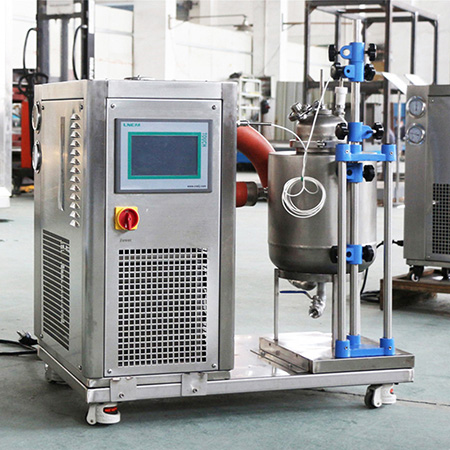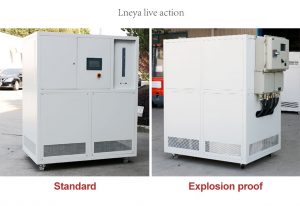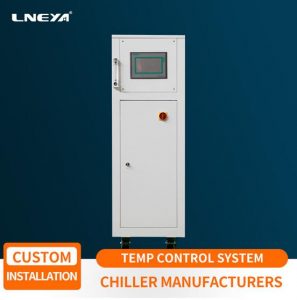¿Por qué existe el coque de aceite de transferencia de calor del dispositivo de control del sistema de transferencia de calor?
En el dispositivo de sistema de control de aceite de transferencia de calor, el aceite de transferencia de calor se utiliza para el control de la temperatura de refrigeración y calefacción. Si no es el mismo que el LNEYA, el uso del circuito completamente cerrado puede afectar a la formación de cierta coquización, resu...
In the heat transfer oil control system device, three main chemical reactions occur in the heat transfer process: thermal oxidation reaction, thermal cracking and thermal polymerization. Coking occurs from thermal oxidation reactions and thermal polymerization reactions. The thermal polymerization reaction occurs because the heat transfer oil is heated during the operation of the heating system, and the reaction generates macromolecular high-boiling substances such as condensed aromatic hydrocarbons, colloids and asphaltenes, which are gradually deposited on the surface of the heater and the pipeline to form coking.
The thermal oxidation reaction of the heat transfer oil is mainly caused by the heat transfer oil in the expansion tank of the open heating system contacting the air or participating in the circulation, and the reaction generates low-molecular or high-molecular acidic components such as alcohol, aldehyde, ketone, acid, etc., and further generates Glue, asphaltene and other viscous substances, then form coking; thermal oxidation is caused by abnormal conditions, once it occurs, it will accelerate thermal cracking and thermal polymerization, so that the viscosity increases rapidly, heat transfer efficiency decreases, causing overheating and furnace tube Coking. The resulting acid can also cause corrosion and leakage of equipment.

The heat transfer oil control system device heat transfer oil will form a heat insulation layer during use, resulting in a decrease in heat transfer coefficient, an increase in exhaust gas temperature, and an increase in fuel consumption. On the other hand, since the temperature required for the production process remains unchanged, The heating temperature rises sharply, causing cracks, causing serious accidents such as equipment and operator personal injury.
In the heat transfer oil control system device, if the heat transfer oil has a coking failure, the heat transfer oil control system device will be unavailable, and the heat transfer oil control system device is required to perform certain maintenance work.
(This article is from the source network. If there is any infringement, please contact LNEYA for deletion, thank you.)
Recomendaciones relacionadas
-
About the size and installation height of refrigeration heating temperature control system equipment
1391Whether it is biopharmaceutical, traditional Chinese medicine or chemical pharmacy, pharmaceutical companies are all related to chemistry, because the extraction and synthesis of pharmaceutical ingredients are all in the form of chemical products...
Ver detalles -
Use of electric vehicle battery chillers in the applied industry
1782In the electric vehicle industry, the battery pack is one of its main components, with high difficulty and complex nature, so the choice of chiller for its testing is also very important. The LNEYA electric vehicle battery chiller provides a solut...
Ver detalles -
Con estos puntos, la eficiencia de uso del refrigerador de temperatura ultrabaja puede ser más eficiente
1686La estructura del refrigerador de temperatura ultrabaja es más complicada. Su función principal es proporcionar aire frío al producto, que es la función de refrigeración. Si desea mejorar la eficiencia del congelador, debe prestar atención a la t...
Ver detalles -
How should an industrial chiller manufacturer choose
12832. Try to select well-known brandindustrial chiller manufacturers with technical professional work experience.3. If there are visits and inspections, wemust attach great importance to the big aspects and pay more attention to thesmall key point...
Ver detalles
 LNEYA Enfriadoras industriales Fabricante Proveedor
LNEYA Enfriadoras industriales Fabricante Proveedor














